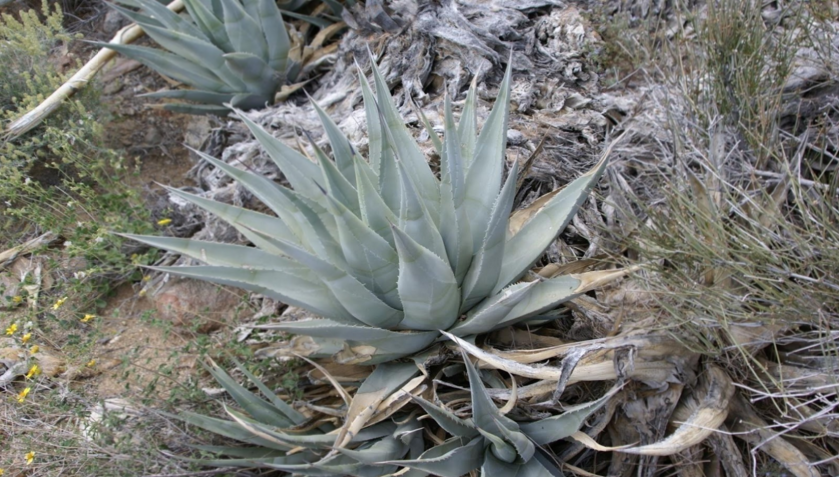The Kumeyaay Plant World
Kumeyaay knowledge of plant life has always been extensive and expansive. Certain plants such as ephedra and white sage are best known as sources of power to heal and to sooth, others made ideal construction materials such as willow and juncus grasses, and others could be used for fuel and for homes. It is not enough to know the use of a plant, a Kumeyaay must also know the season that the plant must be picked, which side of a valley to pick from, and how to process and store the plant. This level of plant husbandry is one of the attributes that sets the Kumeyaay apart from groups who may have been less complex hunters and gatherers.
There is strong evidence that the Kumeyaay planted or transplanted vegetation that was of particular importance or value to them. Examples of this include elderberry plants at village site in settings that would not normally contain or sustain elderberries. Noteworthy examples of this have been found at the site of the village of Jamul in southeastern San Diego, and at a large settlement known today as Piedras Pintadas that existed for thousands of years near Lake Hodges. Not far from the Jamul site at the recorded location of the village of Jamacha, biologists reported mesquite completely out of context growing within the settlement (Beauchamp 1998: personal communication). Shipek has suggested that medicinal plants and other specialized plants were grown or maintained in garden plots easily accessible to villagers. This author has found stands of Datura meliodes growing in context with shamanistic sites and ritualistic locales.
The reader is directed to the monograph Santa Ysabel Ethnobotany by Ken Hedges and Christina Beresford and to Michael Wilken’s . An Ethnobotany of Baja California’s Kumeyaay Indians for an in depth discussion of the use of plants. Important plants for the Kumeyaay included California sagebrush (Artemisa californica), white sage (Salvia apiana), flat-top buckwheat (Eriogonum fasiculatum), broom baccharis (Baccharis sarothroides), wild onion (Allium haematochiton), laural sumac (Malosma laurina), San Diego sunflower (Viguiera laciniata), golden-yarrow (Eriophyllum confertiflorum), sawtooth goldenbush (Hazardia squarrosa), yucca (Yucca schidigera, Y. whipplei), prickly pear cactus (Opuntia occidentalis) and scrub oak (Quercus dumosa), grasses Stipa, Elymus, Poa, Muhlenbergia (Munz 1974; Beauchamp 1986). Prior to historic and modern activities, major drainages tthroughout San Diego County contained extensive stands of the riparian community with plants such as sycamore (Platanus racemosa), Fremont cottonwood (Populus fremontii), coast live oak (Quercus agrifolia) and willow (Salix sp.) (Munz 1974; Beauchamp 1986).
 AGAVE: A PLANT OF MANY USES FOR OUR PEOPLE
AGAVE: A PLANT OF MANY USES FOR OUR PEOPLE
YERBA MANSA: MEDICINE AND BEAUTY
 BEDROCK MILLING FEATURES SUCH AS THESE MORTARS ARE PART OF AN ELABORATE FOOD PROCESSING SITE
BEDROCK MILLING FEATURES SUCH AS THESE MORTARS ARE PART OF AN ELABORATE FOOD PROCESSING SITE
The Kumeyaay ability to live in harmony and concert within the environmental setting of San Diego includes using controlled burns and fire management to reduce the chance of large scale forest fires, to replenish the earth, and to hunt. In the story of Chaup First Mother or Earth Mother (Sinyohauch) tells her two young sons that to kill the deer, “He is on a high mountain, and you must set fire to the mountain and he will run out and can kill him.”
Accounts of Kumeyaay using fire to both drive animals and to control unwanted underbrush and to nourish the soils can be found in early Spanish accounts from the 1700s and in anthropological studies. The late Jane Dumas, a well-respected plant specialist noted that the oaks and other large trees are most healthy when the brush and low shrubs below them are periodically burned.
22 Dubois Story of Chaup, 1904, 225.

